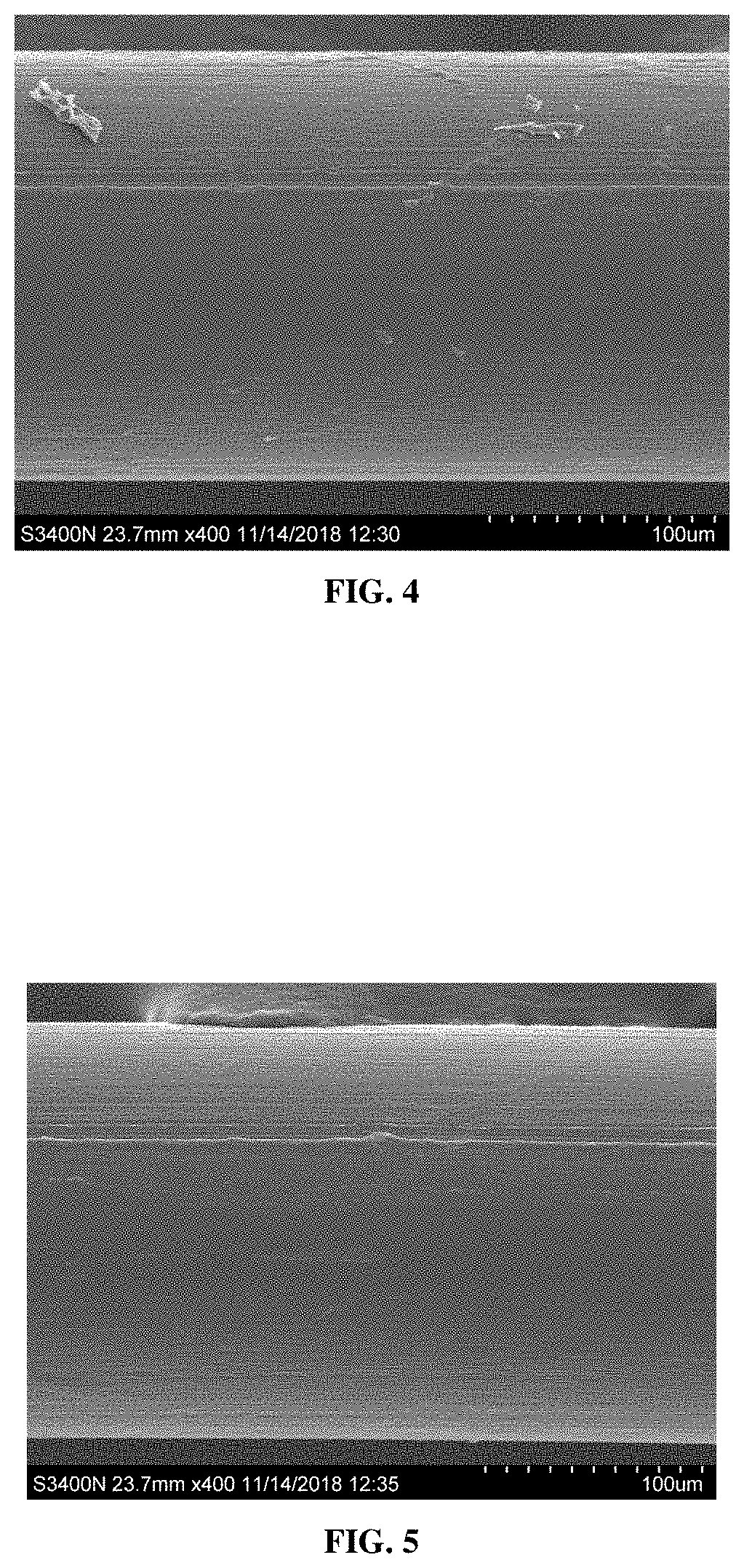Articles of poly(butylene succinate) and copolymers thereof
a polymer composition and polymer technology, applied in the field of absorbable polymer compositions, can solve the problems of loss of strength retention, limited application primarily to fast healing repairs, and no fda-approved implants containing poly(butylene succinate) or copolymers thereof have been successfully developed, so as to prevent colonization of implants and reduce or prevent the occurrence of infection
- Summary
- Abstract
- Description
- Claims
- Application Information
AI Technical Summary
Benefits of technology
Problems solved by technology
Method used
Image
Examples
example 1
ent Melt Extrusion of Succinic Acid-1,4-Butanediol-Malic Acid Copolyester with Two Stage Orientation in Convective Chambers to Produce Monofilament Fiber for Implants
[1080]Succinic acid-1,4-butanediol-malic acid copolyester (Tepha lot 180333) with weight average molecular weight of 184 kDa, Tm=115° C., (melt flow rate (MFR) at 190° C. / 2.16 kgf of 5 g / 10 min) was dried under vacuum overnight to less than 0.01% (w / w) water. Dried pellets of the polymer were fed into an extruder barrel of an AJA (Alex James Associates, Greer, S.C.) ¾″ single screw extruder (24:1 L:D, 3:1 compression) equipped with a Zenith type metering pump (0.16 cc / rev) and a die with a single hole spinneret (0.026″, 2:1 L:D) under a blanket of nitrogen. The 4 heating zones of the extruder were set at 75° C., 165° C., 180° C. and 180° C. The extruder was fitted with a quench bath filled with water at 35° C. and set up with an air gap of 10 mm between the bottom of the spinneret and the surface of the water. Two 2-rol...
example 2
ent Melt Extrusion of Succinic Acid-1,4-Butanediol-Malic Acid Copolyester with Multi Stage Incremental Orientation in Conductive Chambers to Produce Monofilament Fiber for Implants
[1081]Succinic acid-1,4-butanediol-malic acid copolyester (Tepha lot 180333) with weight average molecular weight of 184 kDa, Tm=115° C., (MFK 190° C., 2.16 kg, 5 g / 10 min) was dried under vacuum overnight to less than 0.01% (w / w) water. Dried pellets of the polymer were fed under a blanket of nitrogen into the extruder barrel of a 2½″ American Kuhne single screw extruder (30:1 L:D, 3:1 compression) equipped with a Zenith type metering pump model HPB917, a die with 0.5 mm—8 hole spinneret and 8 heat zones. The 8 heating zones of the extruder were set between 40° C. and 200° C. The extruder was fitted with a quench bath filled with water at 35-70° C. and set up with an air gap of 10 mm between the bottom of the spinneret and the surface of the water. Two 5-roll godets were positioned after the quench bath, ...
example 3
ment Extrusion of Succinic Acid-1,4-Butanediol-Malic Acid Copolyester to Prepare Implants
[1083]Succinic acid-1,4-butanediol-malic acid copolyester (Tepha lot 180333) with weight average molecular weight of 184 kDa, Tm=115° C., (melt flow rate (MFR) at 190° C. / 2.16 kgf of 5 g / 10 min), was dried under vacuum overnight to less than 0.01% (w / w) water. Dried pellets of the polymer were fed into an extruder barrel of an AJA (Alex James Associates, Greer, S.C.) ¾″ single screw extruder (24:1 L:D). The extrusion barrel contained 4 heating zones, a metering pump and a spin pack assembly. The pellets were gravity fed into a chilled feeder section and introduced into the extruder with temperature profile set as follows: Chimney 40° C.-100° C., Spinneret 170° C.±30° C., Pump 170° C.±30° C., Block 170° C.±30° C., Zone 4 160° C.±40° C., Zone 3 150° C.±40° C., Zone 2 120° C.±50° C., Zone 1 30° C.-40° C., Feed Zone: Ambient temperature. The heated and homogenized melted resin from the extruder was ...
PUM
| Property | Measurement | Unit |
|---|---|---|
| temperature | aaaaa | aaaaa |
| temperature | aaaaa | aaaaa |
| elongation to break | aaaaa | aaaaa |
Abstract
Description
Claims
Application Information
 Login to View More
Login to View More - R&D
- Intellectual Property
- Life Sciences
- Materials
- Tech Scout
- Unparalleled Data Quality
- Higher Quality Content
- 60% Fewer Hallucinations
Browse by: Latest US Patents, China's latest patents, Technical Efficacy Thesaurus, Application Domain, Technology Topic, Popular Technical Reports.
© 2025 PatSnap. All rights reserved.Legal|Privacy policy|Modern Slavery Act Transparency Statement|Sitemap|About US| Contact US: help@patsnap.com



